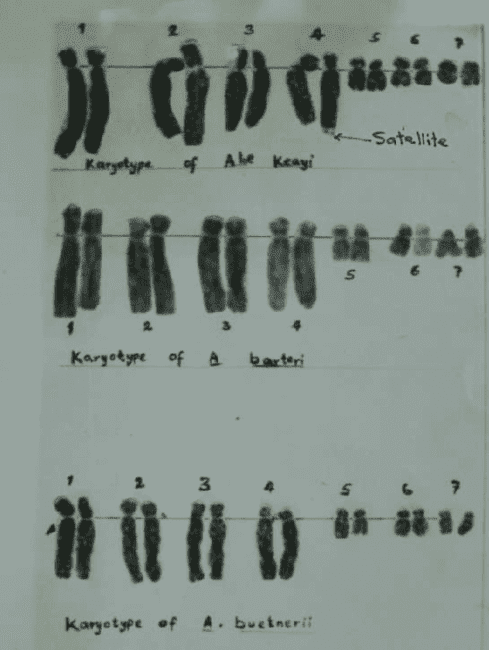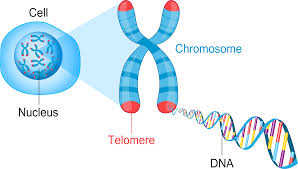The most important parameter for describing chromosome is the centromere location. However, the size of chromosome is also very important in their morphological description. Therefore, it is generally agreed that the two most important parameters for morphological description of chromosomes are the centromere location and the size of the chromosomes.
Size of Chromosomes
Chromosomes can be qualitatively described as long, short or medium. Mitotic metaphase chromosomes usually range from about 0.5 µm to 30 µm in length and from 0.2 µm to 3.0 µm. On the average, plants have larger chromosomes than animals.
Cytogeneticists use karyotypes and idiograms to demonstrate such characteristics. The total chromosomal complement of a cell is refer to as the karyotype. The complement can be photographed during mitosis and rearranged in pairs to produce a picture refer to as karyotype.
An ideogram is a digramatic representation of the gametic chromosome set (n) of a given species. The longest chromosomes occur in plant genus Trillium and are longer than 30 µm. The shortest chromosomes are less than 1.0 µm.

Satellite Chromosomes
These are also refer to as nucleolar organizer chromosomes (NOC). These are chromosome that have secondary constriction in addition to the primary constriction, the centromere that we have dealt with before.
Read Also : How to Plant Fruit Trees for Optimum Performance
The region of secondary constriction is referred to as nucleolar organizer region (NOR). The region is so called because nucleolus is found associated with the region during interphase and prophase, and it is responsible for the formation of the nucleolus during telophase.
Thus, NOR is actually not a constriction, but it is negatively heteropycnotic such that the remaining portion of the chromosome appears removed from the chromosome like a fragment: the portion that appears removed is called satellite.
Thus NOC can also be called satellite chromosome. Large satellites can possess a separate constriction and are called tandem satellite.

Molecular Explanation for the Function of NOR
NOR contains genes that are responsible for rRNA production. After production, rRNA are transferred to the nucleolus for final assembly into ribosomes.
Euchromatin and Heterochromatin
Staining the interphase nucleus by various chemical dyes reveals a network of nucleoprotein material called the chromatin. These structures are organized into chromosomes during nuclear division. Chromatin possesses differential staining properties.
Those that stain very darkly are called heterochromatin while those that stain relatively lightly are called euchromatin.
Heterochromatin is considered to be genetically inactive while euchromatin is associated with intense genetic activity before the term heterochromatin was coined, Montgomery (1904, 1906) and Gutherz (1907) described the concept of heteropycnosis whereby some chromosomes or chromosome regions are out of phase in respect to their coiling cycle and staining properties.
These chromosomes or chromosome regions were later described as heterochromatic. Costitutive heterochromatin usually does not change its nature.
It is found at the proximal to centromere, telomere, and in the NOR and satellites. Facultative heterochromatinis euchromatin that has been heterochromatized.
Telomere
Telomeres are present at the ends of chromosomes. They act like caps preventing chromosome ends from joining. When chromosome breaks, absence of telomeres at the broken ends can make chromosome to join each other and cause aberrations. Moreover, telomere prevents chromosome shortening after replication.
Functions of the Telomere
– Prevention of joining of chromosomes
– Prevention of digestion of chromosome ends from digestion by enzymes that can digest double-stranded chromosome ends.
In summary, chromosomes can be classified and identified on the basis of size. Presence of secondary is another important attributes of chromosomes.
Chromosomes can be classified as long, medium and small based on their sizes. Apart from the cenromere (primary constriction) present on chromosomes, some also have a region of secondary chromosomes. Such chromosomes are called satellite chromosomes.
They are important in ribosome production. Heterochromatin are genetically inactive regions while euchromatin are active regions.
Read Also : Determination of Physico-Chemical Parameters of Water






